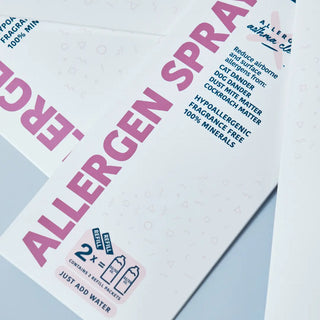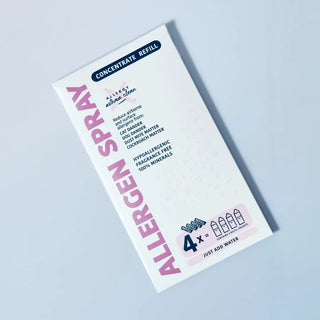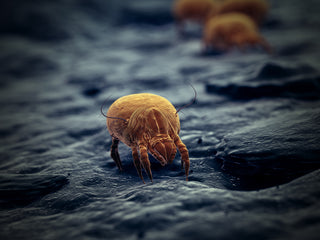Dust. It's a constant associate settling on our furniture, swirling in sunbeams, and seemingly appearing out of nowhere. We clean it relentlessly (some of us do, let's be honest!), yet it always seems to return. But what exactly is dust? This seemingly simple question has a surprisingly complex answer. Dust is a ubiquitous mixture of tiny particles, a microscopic world with surprising origins. From the skin we shed to the soil carried by the wind, dust tells a story of our environment, both natural and man-made. It's downright fascinating!
First, how many pounds of dust does an average house collect a year?
This might surprise you. Answer at the end of the article.1. 5lbs
2. 12lbs
3. 40lbs
What is Dust?
Dust isn't a single substance but rather a diverse cocktail of microscopic particles originating from a surprising range of sources. We can broadly categorize these sources into two categories: natural and man-made.
Dust is Made of What Kind of Natural Sources?
Dead Skin Cells: Shedding is a fact of life for both humans and animals. Tiny flakes of our skin constantly slough off, contributing a significant portion to household dust. Frankly, that's a yuck for me!
Soil Particles: Wind erosion relentlessly breaks down and transports soil particles, creating dust storms that paint the skies and contribute to the composition of airborne dust everywhere.
Pollen: Pollen is the reproductive spores of plants. Pollen travels through the air and can become a major component of dust, especially during allergy season.
Micrometeorites: Tiny particles from outer space, remnants of asteroids and comets, constantly bombard our atmosphere. Some of these particles survive and settle as dust on Earth. It's been determined that 5,000 lbs of micrometeorites fall on Earth each year, which is the equivalent of 25-30 blue whales (the largest animals to have ever lived). 1
Dust From Man-Made Sources:
Fibers: Our clothes, carpets, and other fabric furnishings shed tiny fibers that become part of the dust we encounter indoors.
Microplastics: The breakdown of plastic products creates microscopic plastic fragments that can become airborne and contribute to dust composition. And what are some plastic products? Did you know 64% of fabric is made from polyester, nylon, and acrylic?2
Pollution Particles: Combustion from vehicles and industrial processes releases fine particles of soot and other pollutants that become part of the dust we breathe.
Where Does Dust Come From Exactly?
While dust is everywhere, its specific makeup can vary depending on the environment. Let's take a closer look at the two main dust battlegrounds: our homes and the outdoors.
Household Dust: A Personal Touch
Inside our homes, dust takes on a distinctly personal character. The major component, surprisingly, is dead skin cells – a constant reminder of our own shedding. Hair, fibers from carpets and clothing, and even insect parts add to the mix. But a particularly interesting resident of household dust is the dust mite. These microscopic creatures feed on dead skin cells and can trigger allergies in some people. Most people who are allergic are bothered by dust mites.
Outdoor Dust: A Blend of Nature and Industry
The swirling dust clouds outdoors are a far cry from the personal touch of household dust. Here, the dominant player is often soil particles, kicked up by the wind and forming the base of dust storms and airborne dust. Pollen adds a seasonal element, blanketing the air during flowering seasons and causing misery for allergy sufferers. Smoke and ash from wildfires can also significantly contribute to outdoor dust, impacting air quality over vast areas. Additionally, for those living near coastlines, salt crystals become a prominent component of outdoor dust carried by sea breezes. Who knew?
Dust is More Than Just a Nuisance
While dust may seem like a mere inconvenience, its presence can have significant consequences for our health and the environment.
Health Effects:
Respiratory Problems: Inhaling dust particles, especially fine particles less than 2.5 micrometers (PM2.5), can irritate the lungs and aggravate respiratory conditions like asthma and chronic obstructive pulmonary disease (COPD).
Allergies: Dust mites, pollen, and other allergens present in dust can trigger allergic reactions, causing symptoms like sneezing, itchy eyes, and runny nose.
Achieving a perfectly dust-free home might be a fantasy, but that doesn't mean we have to resign ourselves to dust bunnies. Here's how to create a cleaner, healthier environment: ditch the feather duster! It just stirs dust around. Instead, use a damp cloth (preferably a microfiber cloth!) or mitt to trap dust particles. If allergies are a concern, wear a mask while dusting or delegate the task altogether. The key is consistency: frequent short dusting sessions throughout the week are far more effective than a daunting monthly deep clean.
So, the next time you encounter a dust bunny, think about what could possibly be included in that mix! Captivating, don't you think?
Answer: 40 lbs of dust a year!
1 https://www.popsci.com/story/science/space-dust-falls-to-earth
2 https://plasticactioncentre.ca/directory/how-plastics-breakdown-into-microplastics/


















